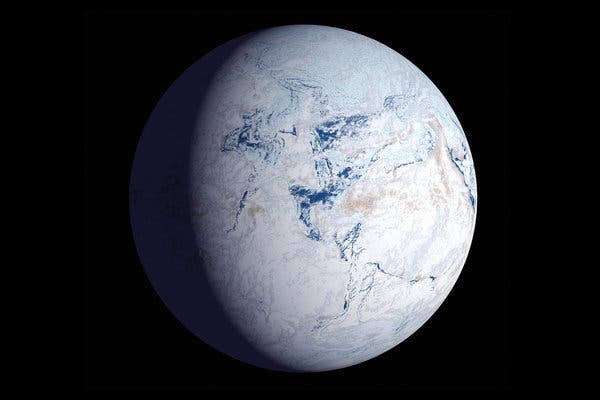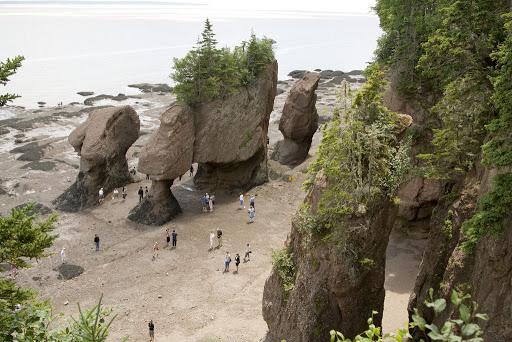The Top 5 Highest Tides on Earth
| Location | Mean Tidal Range | |
|---|---|---|
| 1 | Burntcoat Head, Bay of Fundy, Nova Scotia | 11.7 metres (38.4 feet) |
| 2 | Leaf Lake, Ungava Bay, Quebec | 9.7 metres (32.0 feet) |
| 3 | Port of Avonmouth, Bristol, United Kingdom | 9.6 metres (31.5 feet) |
| 4 | Sunrise, Turnagain Arm, Cook Inlet, Alaska | 9.2 metres (30.3 feet) |
| 5 | Rio Gallegos (Reduccion Beacon), Argentina | 8.8 metres (29.0 feet) |
 Special Report
Special Report
What you'll learn in this report:
Tides, Not Nearly as Boring as People Think
Did you know that ocean tides are essential for life as we know it on this planet? The gravitational pull of the sun and moon causes the rise and fall of tides, which not only creates beautiful ocean views but also stirs up nutrients on the sea floor that are crucial for the survival of marine life. While wind and land masses also play a role, the moon is the primary factor in relation to tides and its effect on the earth's oceans.
Here's some mind blowing information: if it weren't for the rise and fall of the tides, you probably wouldn't be reading this right now. Mostly because life as we know it on this planet was very likely helped along by the fact that we have ocean tides - and we have ocean tides because of the gravitational pull of the sun and the moon.
While it's true that wind and land masses play a role too (it's all pretty complex), the moon is probably the most important factor in relation to tides and its effect on the earth's oceans. Despite the calm and tranquil nature of the moon, it is not just hanging up there doing nothing. It is up there causing the tides to rise and fall which stirs up nutrients on the sea floor and distributes them among all the abundant plant life along the shore.
These nutrients are a key ingredient for sea-life to thrive and are an important link in the food chain that provides food for birds, whales, fish and a variety of other marine life and coastal species. So maybe thank the moon and the tides the next time you are chowing down on some tasty deep-fried scallops and clams.The moon's effect on tides is not just interesting, but it's also essential for the thriving of sea-life.
As the tides rise and fall, they distribute nutrients among all the abundant plant life along the shore, which is a key ingredient for many marine species to survive. These nutrients play an important role in the food chain, providing food for birds, whales, fish, and various other marine life and coastal species. So next time you enjoy a seafood meal, take a moment to thank the moon and the tides for their role in making it possible.

If we were to be so unlucky that a giant asteroid blasted our moon out of its orbit around earth tomorrow, the tidal force would be so drastically affected to the point that without the movement of the tides, all the oceans plants may die, and that means most fish and other marine life would probably die, and then humans would likely follow suit fairly quickly. Whatever the case, our "friend" the ocean's tides are actually pushing our moon slooooowly (a billion years slowly) away from earth, which will eventually slow the earth's rotation down and...nevermind.
Without the movement of tides, our oceans' plants may die, and that means most fish and other marine life would probably die, and then humans would likely follow suit. The ocean's tides are our "friend," and they're slowly pushing our moon away from Earth. The Bay of Fundy, located in Canada's New Brunswick and Nova Scotia provinces and a small part of the United States' Maine, has the highest tides on the planet and has been designated one of North America's seven wonders, along with Niagara Falls and the Grand Canyon.

The Highest Tides in the World are in Canada
You probably haven't heard of the Bay of Fundy, but it has the highest tides on this planet and has been designated one of North America's seven wonders, along with the Grand Canyon and Niagara Falls, which we're guessing you probably have heard of. The Bay of Fundy is found in two atlantic provinces in Canada: New Brunswick and Nova Scotia, and a teeny-tiny part of it touches the state of Maine in the United States too. The tides in the in the Bay of Fundy can quickly rise as high as a 5 story building, up to 16 metres or 56 feet, in just a matter of hours. So maybe keep that in mind if you decide to explore its beautiful beaches.
The Bay of Fundy is shaped like a giant "V," which pushes the water higher as it moves inland. This shape, combined with other factors such as the sun and the moon's effect on the coastline, makes the Bay of Fundy the perfect spot for the highest tides in the world. In fact, some areas in the Bay of Fundy can see tides rise as high as a 5-story building, up to 16 meters or 56 feet, in just a matter of hours. So if you're planning to explore the beautiful beaches of the Bay of Fundy, keep in mind the incredible heights the tides can reach.

What Makes the Bay of Fundy So Special?
There are a lot of factors that come into play for a specific area of the planet to have high and low tides. The shape and geometry of a coastline, and the sun and the moon's effect on those elements play a huge role. The Bay of Fundy has all of these particular elements in spades. The Bay of Fundy is basically shaped like a giant "V" which pushes the water higher as it moves inland. It has the perfect combination of factors for the highest tides in the world to be produced there.
In this article we've learned that there are many factors that come into play for a specific area of the planet to have high and low tides. The shape and geometry of a coastline, as well as the sun and the moon's effect on those elements, are crucial. In the Bay of Fundy, all of these particular elements come together to create the highest tides in the world. If we didn't limit our top 5 list to not show tide measurements from the same area of a body of water, areas in the Bay of Fundy would have taken up our whole top 5 list. Here are the top 6 highest tides in the Bay of Fundy:
1. Burntcoat Head, Minas Basin, Bay of Fundy, Nova Scotia: 38.4 metres.
2. Horton Bluff, Avon River, Minas Basin, Bay of Fundy, Nova Scotia: 38.1 metres.
3. Amherst Point, Cumberland Basin, Bay of Fundy, Nova Scotia: 35.6 metres.
4. Parrsboro (Partridge Island), Minas Basin, Bay of Fundy, Nova Scotia: 34.4 metres.
5. Hopewell Cape, Petitcodiac River, Bay of Fundy, New Brunswick: 33.2 metres.
6. Joggins, Bay of Fundy, Nova Scotia: 33.2 metres.

In conclusion, ocean tides are not just a beautiful natural phenomenon but also an essential element for the thriving of marine life and the planet's overall ecosystem. The Bay of Fundy in Canada boasts the highest tides on Earth, with areas like Burntcoat Head and Horton Bluff reaching heights of over 38 meters. We owe it all to the gravitational pull of the moon, which slowly but surely pushes our natural satellite away from Earth and affects the tides on our planet. Next time you visit a beach or enjoy seafood, take a moment to appreciate the moon's contribution to our lives. With that said, we hope this article has been informative and engaging for you, and we invite you to explore more of the wonders of our world.

Noel James Riggs,
Head writer, Top 5 of Anything.com.
Sources: National Oceanic and Atmospheric Administration: Where are the highest tides?
List Notes: Data is top 5 highest tides measured by largest mean (average) tidal ranges. Please note: we have omitted geographic locations that are located near or on the same body of water for the purposes of this list.

